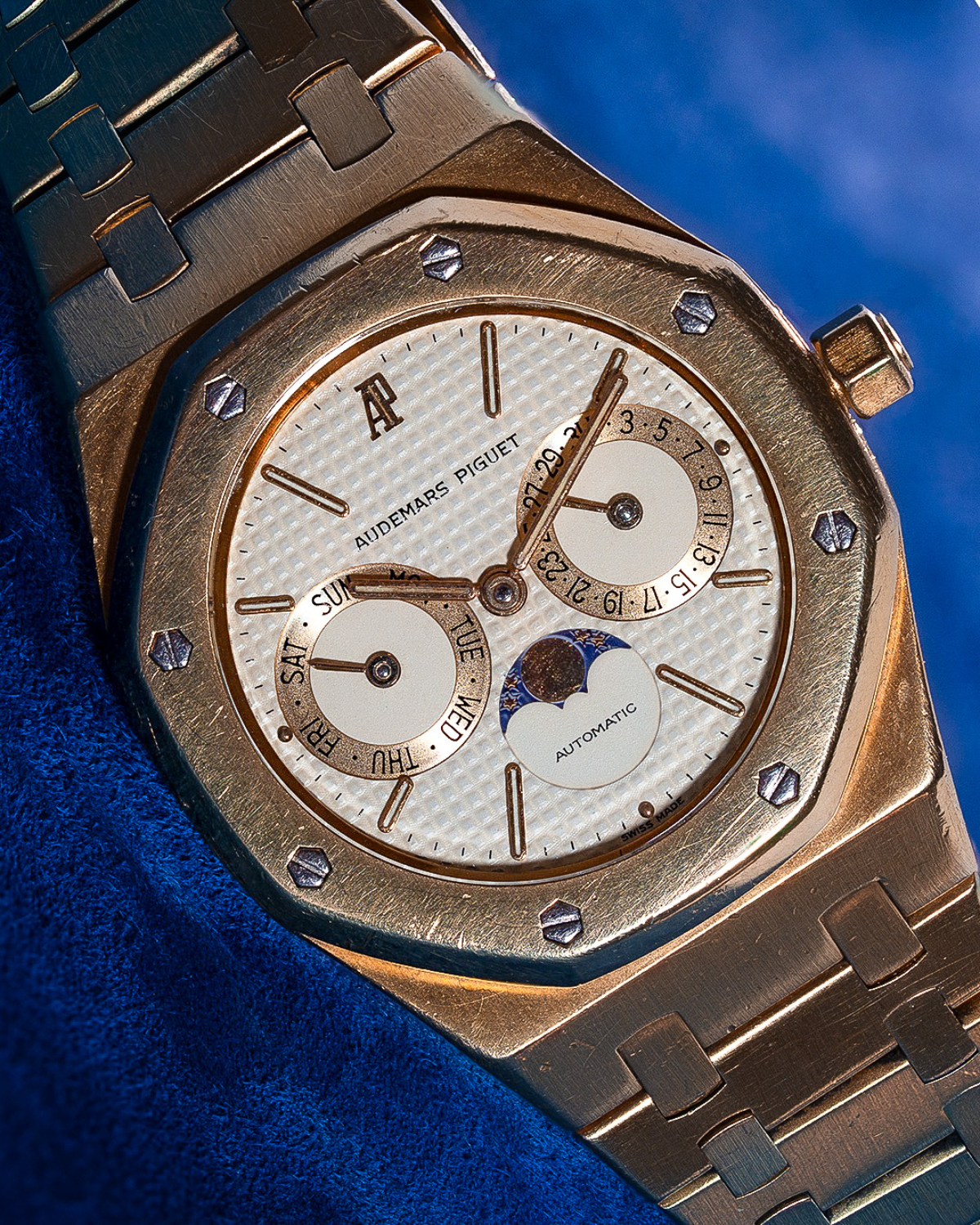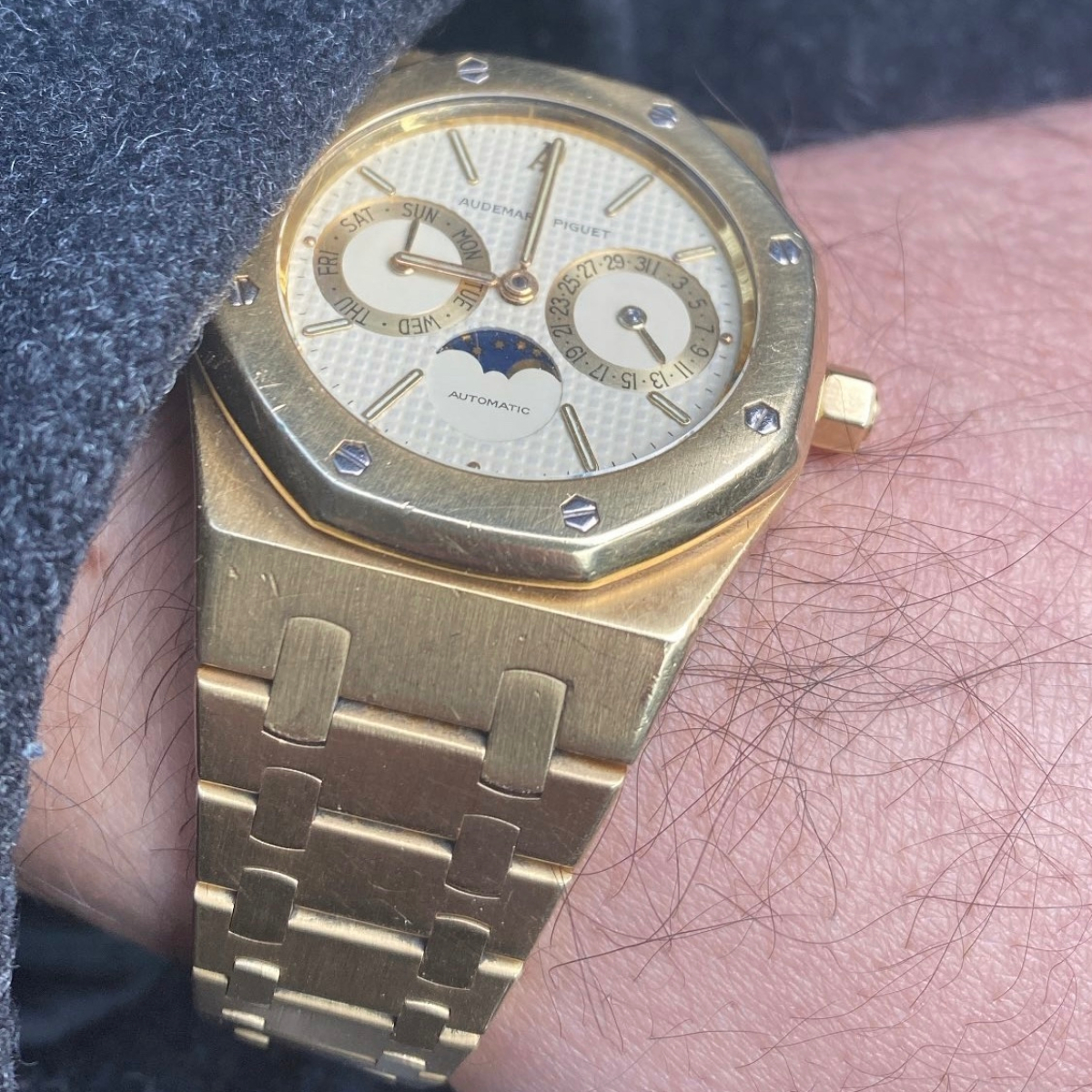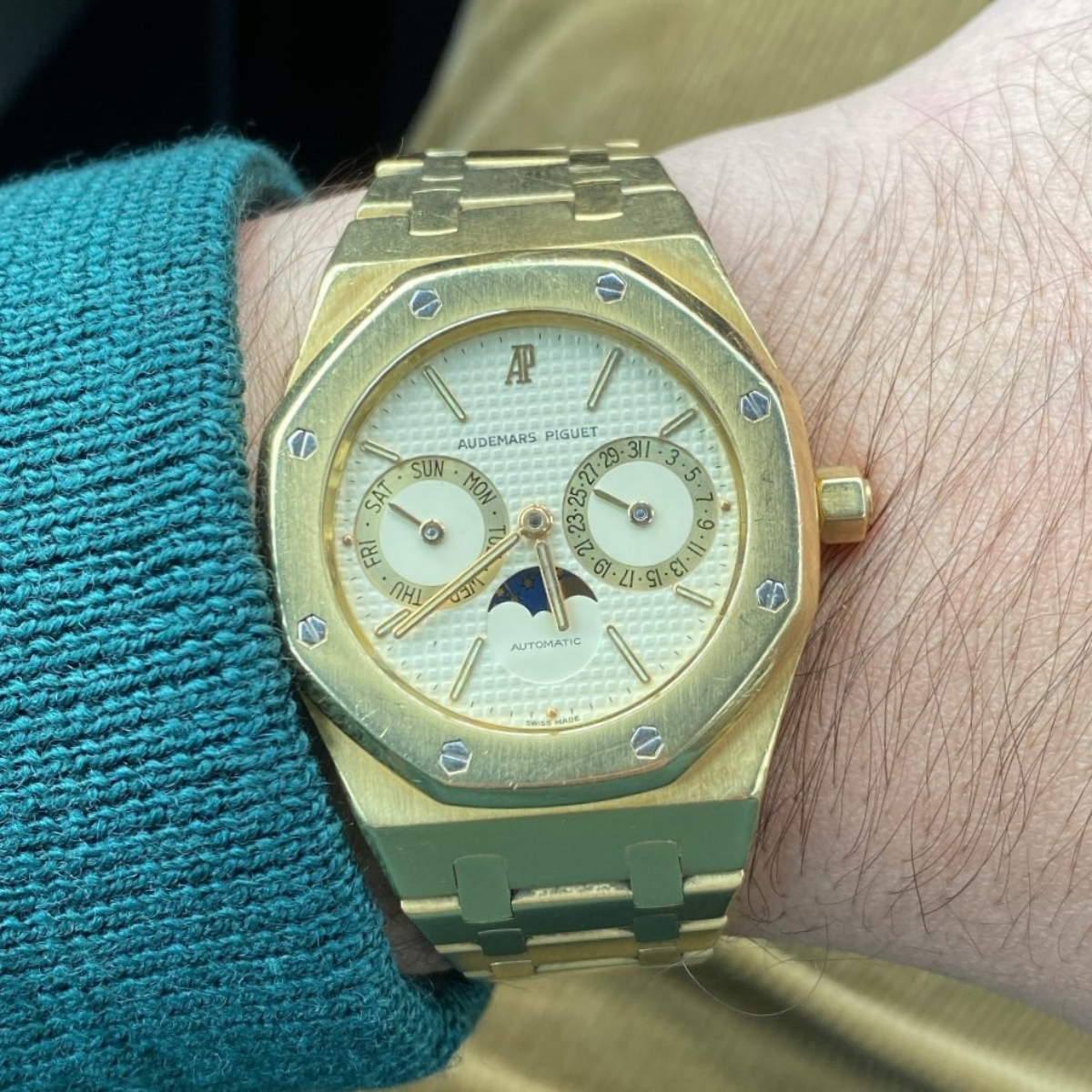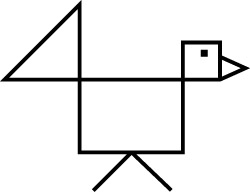Long before my encounter with the Audemars Piguet Royal Oak 25594BA my first time trying on a Royal Oak on my wrist was a literal jaw dropping experience that lasted two to three minutes. I know this because I was staring down at the watch, timing myself the whole time. How could something look that achingly beautiful and perfect? I felt ecstatic and enthralled, bowled over, let in on some forbidden secret.
I had tried on a 25594ST owned by another attendee at a local collector meetup last summer. The bracelet was precisely sized for my wrist, and along with the case lightly worn; there was a warmth to it that is very commonly experienced with well-loved watches. The case and bracelet thickness were very well proportioned. The dial, at 36mm, should have looked smaller than it did in the metal. The day/date/moon phase complication was utterly charming, and the watch really did look like an owl, its given nickname. The polished surfaces were almost too much to take in at first. It looked like a perfect watch.
Later that night, scrolling through Chrono24 under the influence as one does, I discovered an affiliate listing for a Audemars Piguet Royal Oak 25594BA on auction at Sotheby’s. This was the same watch I had tried on but in 18K gold. The high bid seemed super low. I stared at the watch: my eyes swam, literally and figuratively. I registered for an account with Sotheby’s and double checked that if I did this, and won, that I was liquid enough to commit to this idiocy. The likelihood of winning seemed zero, bidding closed in eight days. I would surely be outbid by someone else even more obsessed and in search of a deal on such a desirable watch. Hadn’t some recent watch podcast I was listening to preached the necessity of participating in an auction to better understand that part of the world of watches? Wasn’t this the next thing I wanted to learn about?

I placed the bid.
Eight days later the clock wound down, the auction ended, I was not outbid, and immediately received an email from Sotheby’s congratulating me on having won the right to pay what suddenly felt like an ungodly sum of money for the Audemars Piguet Royal Oak 25594BA. It was, and remains, nearly twice as expensive as any other watch I’ve purchased. It took me a few weeks to gird my balls and go through with the purchase and arrange delivery.
This is as good a time as any to explain the actual aesthetic condition of the Audemars Piguet Royal Oak 25594BA was not great, in my ultimately revised opinion. It had gone super soft in its twenty-six years of wear. The bracelet and case facets that gleam and catch the light in all the ways that make a Royal Oak such a feast for the eyes were severely dimmed. The watch had almost certainly been polished at some point, and still had a lifetime of scratches. Even the moon phase disk, under a loupe, showed some scratches. There were hairline cracks near the inner hinge of the white gold flaps that made up the deployant clasp (such an AP flex, to make the clasp in white gold instead of what may at first glance just look like steel). It kept good time, the tactile feedback from using the crown in all its positions was buttery smooth, and it was accompanied by a box but no papers. In sum, it eventually made sense to me why I was not outbid, even as I was disappointed that no one else’s stupidity saved me from my own.

All that went out the window when I finally picked it up, opened the packaging and strapped it on my wrist. It was my first auction, holy trinity watch, Royal Oak, moon phase, and my first all gold bracelet (and therefore heaviest) watch, my first serious collecting mistake. It was a tempest of emotions, a sensuous expansion of the palate.
Alas, the Audemars Piguet Royal Oak 25594BA never really felt at home with me, and has since found a new loving owner who helped me break even on it. I realize my main emotion now is just gratitude towards my friends for being there along the way and for helping me move on.
All in all, not the worst way to end an affair.


Leave a Reply
You must be logged in to post a comment.